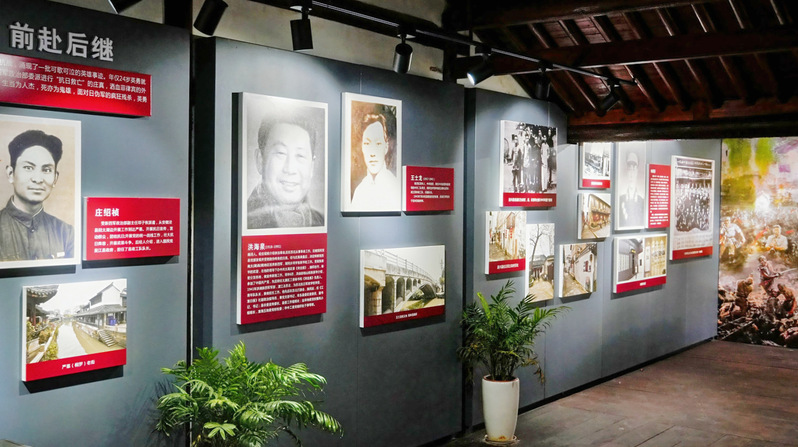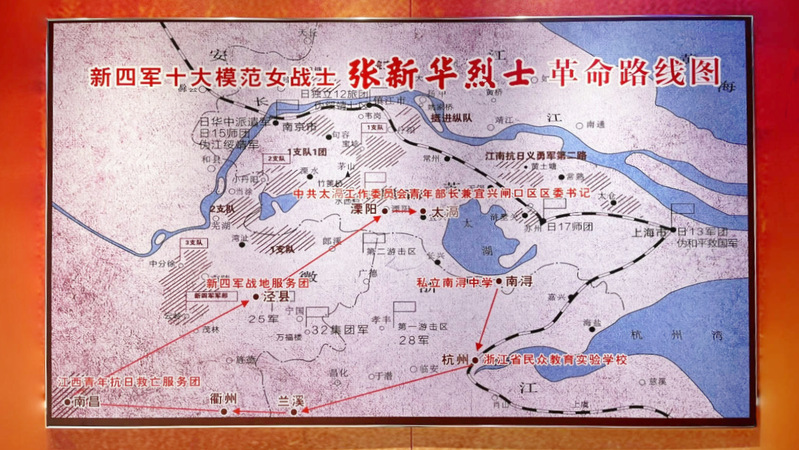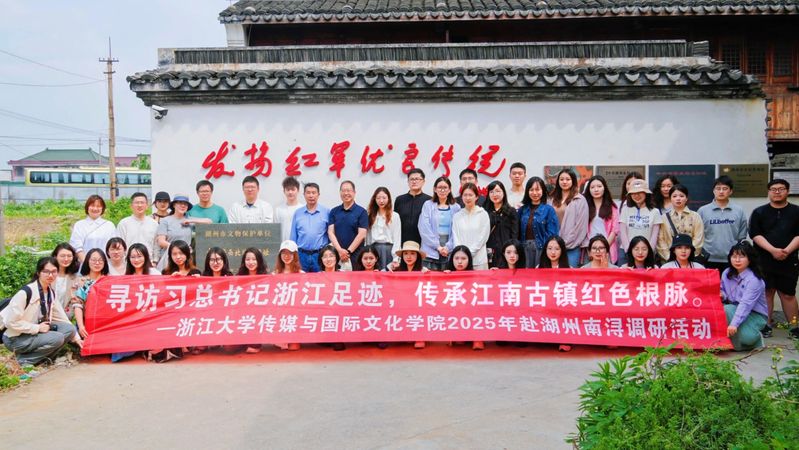As spring deepened on April 18, faculty and student Party members from the College of Media and International Culture traveled to Nanxun, a picturesque water town in Huzhou, for a Party-building initiative titled Tracing General Secretary Xi's Footsteps in Zhejiang, Inheriting the Red Legacy of Jiangnan's Ancient Towns. Known as the Crystal-Clear gem of Jiangnan, Nanxun is not only a cultural treasure but also a revolutionary stronghold where red heritage thrives. Walking through timeworn alleyways, the group immersed themselves in the stirring history of Communist fighters, listening to echoes of revolutionary flames beneath the arched eaves of canals. The experience prompted deep reflection on how media professionals should leverage their expertise to safeguard this legacy and uphold integrity in their work.

Their first stop was the former site of the Communist Party’s Northwest Zhejiang Special Committee—a seemingly ordinary Jiangnan-style house with black-tiled roofs and whitewashed walls that belied its extraordinary past. During the Anti-Japanese War, this unassuming residence served as a covert operations hub after the Southern Anhui Incident. Disguised as a shop, it became a nerve center for secret communications, mobilization, and resistance amid relentless enemy surveillance. Many Party members sacrificed their lives in these perilous times.

Faded photographs and weathered artifacts silently narrated the harrowing tales of revolutionaries who operated undercover as merchants or teachers. Running their hands over the aged bricks, participants felt an indelible connection to the unwavering faith and courage of those who once walked these grounds.
The journey continued at the Red Army Long March Tracking Exhibition Hall, where cutting-edge technology recreated pivotal battles like the Four Crossings of the Chishui River and the Luding Bridge Campaign. Through interactive multimedia and immersive installations, the group virtually traversed the 25,000-li (12,500-kilometer) march, gaining visceral insight into the epic forged by blood and conviction. As media students, we must measure ourselves against the Long March spirit and the yardstick of integrity, remarked one participant, moved by the exhibits.

At the Northwest Zhejiang Special Committee Memorial Hall, retired professor Zhang Mengxin delivered an impassioned Party lecture, opening with sobering casualty statistics. Quoting Zhejiang University’s former president Zhu Kezhen, he posed two timeless questions: First, why have you come to Zhejiang University? Second, what kind of person do you aspire to become after graduation? Urging students to embrace their generational mission, Zhang called on them to carry forward the torch of bearing moral responsibility with iron shoulders and amplify China’s voice on the global stage.

His lecture crescendoed with a spontaneous rendition of The Graduation Song—Arise, classmates! March toward the anti-fascist front!—its defiant lyrics bridging decades, as if summoning the spirits of past revolutionaries to join in chorus.

The group then paid tribute at the former residence of martyr Zhang Xinhua. In 1938, the 25-year-old answered the Party’s call, joining the New Fourth Army’s wartime service corps in Yunling, Anhui, where she organized mass movements in mountainous Jing County. Awarded Top Ten Female Model Soldiers in 1940, she was later captured while establishing a secret communication network in western Zhejiang. Despite torture and inducements, she remained unbroken until her execution. Her handwritten note on display—Though we eat oil-less greens, sleep on straw, and wear coarse cloth, I feel only joy, for the knowledge I gain is as precious as sea cucumber and bird’s nest—left the group awestruck by her revolutionary optimism.

Zhang’s brief but radiant life epitomized the creed of fearless sacrifice and unyielding patriotism, lighting a path for young Party members to follow with action, not just words.

This Nanxun expedition was more than a lesson in Party history—it was a spiritual baptism. From the clandestine struggles of underground operatives to the faith-solidifying trials of the Long March; from the fiery dedication of heroines like Zhang to the town’s modern revitalization, participants retraced the Communist Party’s unrelenting quest for national independence while drawing strength from its enduring ethos of integrity and daring to struggle.

Moving forward, the college will deepen such immersive red education, transforming this legacy into a driving force for innovation. Armed with clean governance and professional rigor, its members are poised to craft media narratives worthy of a new era.

